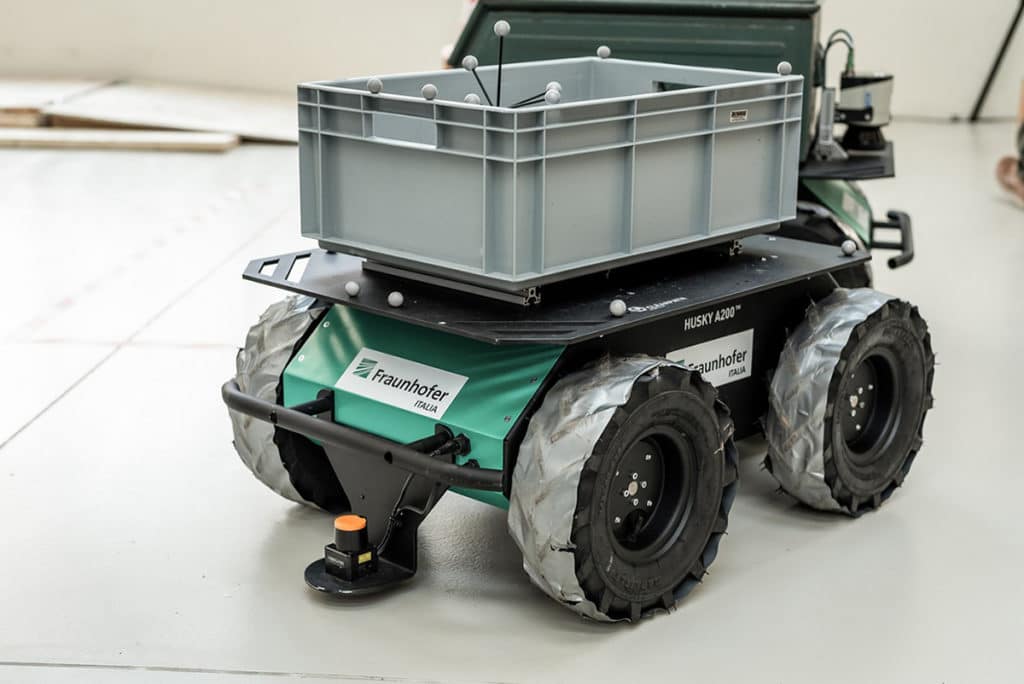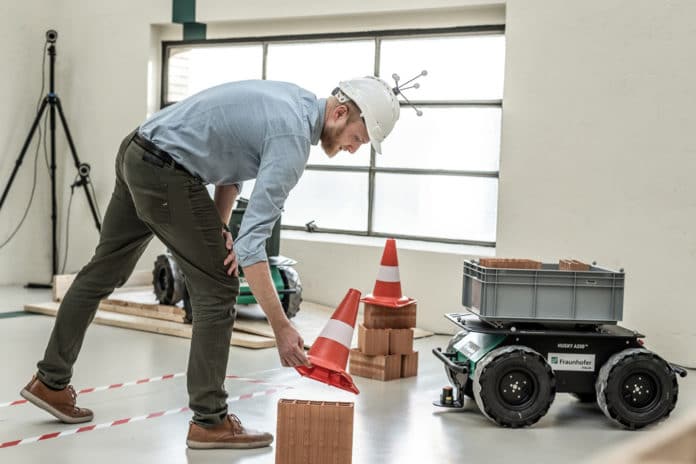Autonomous, mobile robotic platforms will one day make work on the construction site easier by transporting loads. In order to implement this and to accelerate decision-making in construction processes, the researchers at the Fraunhofer Italia Innovation Engineering Center Bolzano, Italy, are developing a software interface that will enable mobile robots to find their way around in construction sites.
With building information modeling (BIM), everyone with a need to know – from planners and building owners to craftsmen and facility management – has access to a digital building data model throughout the entire life cycle of a building.
As part of the ROSBIM project, Michael Terzer, a research fellow and member of the Automation and Mechatronics Engineering team at the Bolzano Center, is developing a software interface, in collaboration with several colleagues from the Process Engineering in Construction research team. The new software interface would link building information modeling (BIM) with the Robot Operating System (ROS).

Credits: LIVE-STYLE Eppan
This modular open-source operating system that supports various programming languages will allow robotics engineers to quickly develop robot systems. It is platform-independent, so diverse types of robots can accommodate it.
“A construction site is animate and constantly changing. The ROSBIM interface receives time-sensitive data such as information about obstacles that the robot cannot detect with its sensors. This way, the robot can be alerted to things like an open cable pit or elevator shaft on a given day at the construction site so that it can navigate around these pitfalls. That means the robot can constantly revise its obstacle map via the Robot Operating System,” says Terzer.
All data is collected and continuously updated in the BIM database. From planning through construction to operation of a building or infrastructure construction, it affects all stages of the construction process.
In this specific case, the main purpose of the mobile robot is to independently transport heavy loads such as building materials and tools in a constantly changing environment, which in turn should make physical work on the construction site easier.
The robot, or rather “Husky A200,” a mobile robotic platform, is currently rolling over the institute’s grounds in the NOI Techpark in Bozen. Serving as a sort of logistics sidekick on the construction site, it tags along with the human construction worker that activates its follow-me function. According to Terzer, the robot can independently move loads from A to B with its digital memory card. However, autonomous transportation in unstructured environments is complex, and further development steps are required here.
The information the robot platform receives by means of BIM data can help improve its navigation capabilities and augment its sensory perception. Other applications are entirely feasible – for example, farmers could find a use for such a mobile robotic assistant.
